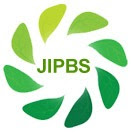 Maybe you can be a little bit pregnant after all.
Maybe you can be a little bit pregnant after all.
At least, that’s what the editors of the Journal of Innovations in Pharmaceutical and Biological Sciences would have submitters believe.
In a rather ham-handed invitation to authors received by a friend of Retraction Watch, the open-access journal “cordially” solicits papers with a helpful illustrated timeline (our comments in parentheses):
Frustrated for publication
Focus on your content
Read your Article
Get Ready (for what, not clear)
Type your article
Submit online
Fast track service (we’ve seen this movie before, and it often ends badly)
We will publish (see above; not reassuring about the rigor of its peer review)
The journal charges 500 Indian rupees for the “lowest publication cost” – we’re guessing some papers, maybe most, won’t fall into that category – and what looks like a $50 surcharge for foreign authors
to support students financial need. Price is less does not mean that all the articles will be accepted. Article which was reviewed & approved by EB member with lowest plagiarism will only be allow to published.
Now, that’s a relief!
Bonus: The journal
Perfer Online Submissiom System but authors can directly send manuscript at
[email protected] OR assoc[email protected]
And the editor-in-chief is at the “University of Bolonga.”
Proofreading might slow down publication, after all.
Hat tip: Jennifer Nyborg
Did you notice that they offer “Fast Track Service”? Note their explanation:
This is unique service provided by JIPBS to encourage the new intruders in the field of pharmaceutical research.
Isn’t this more a Jeffrey Beall story? Not quite sure this fits retractionwatch – we all know about the predatory publishers.
Note however the emphasis regarding the “lowest plagiarism” issue. There is here an actual connection with topics addressed by RW.
There is an old term that we need to resurrect: Vanity Publishing.
Vanity publishing and vanity publishers is a better term than “predatory”, because it puts the ball firmly in the court of the author.
This describes such journals perfectly and we can happily leave it at that. I take great pleasure, 2-3 times a day deleting a whole load of incoming from my mailbox, without reading, which includes requests for vanity publishing – a real feeling of accomplishment in such a simple task :).
Both sides of the coin should be considered. For some narcissistic authors, vanity publishing is an easy way to pad their CV, while for many editors, predatory publishing is an easy way to make money, the one feeding on the other.
The problem are not so much such publishers, which are apparently to amateurish to be even called predatory. The problem are the universities and funding agencies which apparently acknowledge and honour the “publications” placed there.
Since when did RW start covering “predatory” OA journals, which would typically be the focus of the Beal blog? This story, although another case of really worrisome publishers emanating from India, serves to dilute the focus of RW, which should focus on retractions or reasons for their existence. Although I can appreciate that different publishers have different bars when it comes to plagiarism – which in itself murkies the publishing waters – the chance that a paper be retracted from this journal sounds almost null, so perhaps some rationale as to why this story was covered, and not any of the hundreds or thousands of other retractions – or predatory journals/publishers – merits some focus.
Ah, it’s really the “with lowest plagiarism” that makes it RW-worthy. That phrase makes me glad to see this posted here.
Would be interesting to see a definition of “lowest plagiarism.” Out of a given set of submissions? Luck of the draw?
Or perhaps the type of plagiarism that stoops lowest…? The literal one. 😉
Dear J. IPBS: Could we please have some concrete examples of what would be acceptable amounts of plagiarism compared to concrete examples of what would be unacceptably high plagiarism (paying special attention to aspects of what constitutes “at the line,” “on the line,” “over the line” and why, so the rule can be appropriately applied. Just want to comply properly with standards of good science and honesty. Thank you.
A more troubling assumption that seems to be implied by usage: that there WILL be plagiarism. Like the standards that establish maximum acceptable levels of rodent hair and waste in your processed food.
I can see from their web site that the publisher and/or editorial staff do not care at all about the aspect ratio of images.
It does not seem to be a good journal for medical research articles that contain any images.